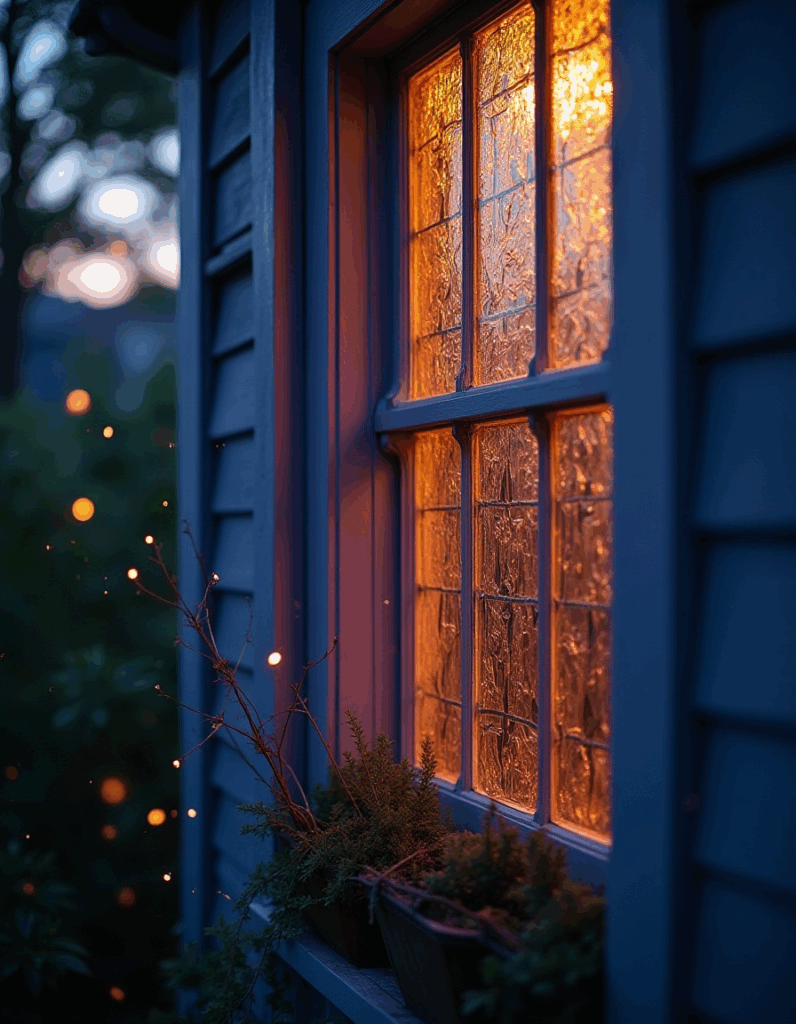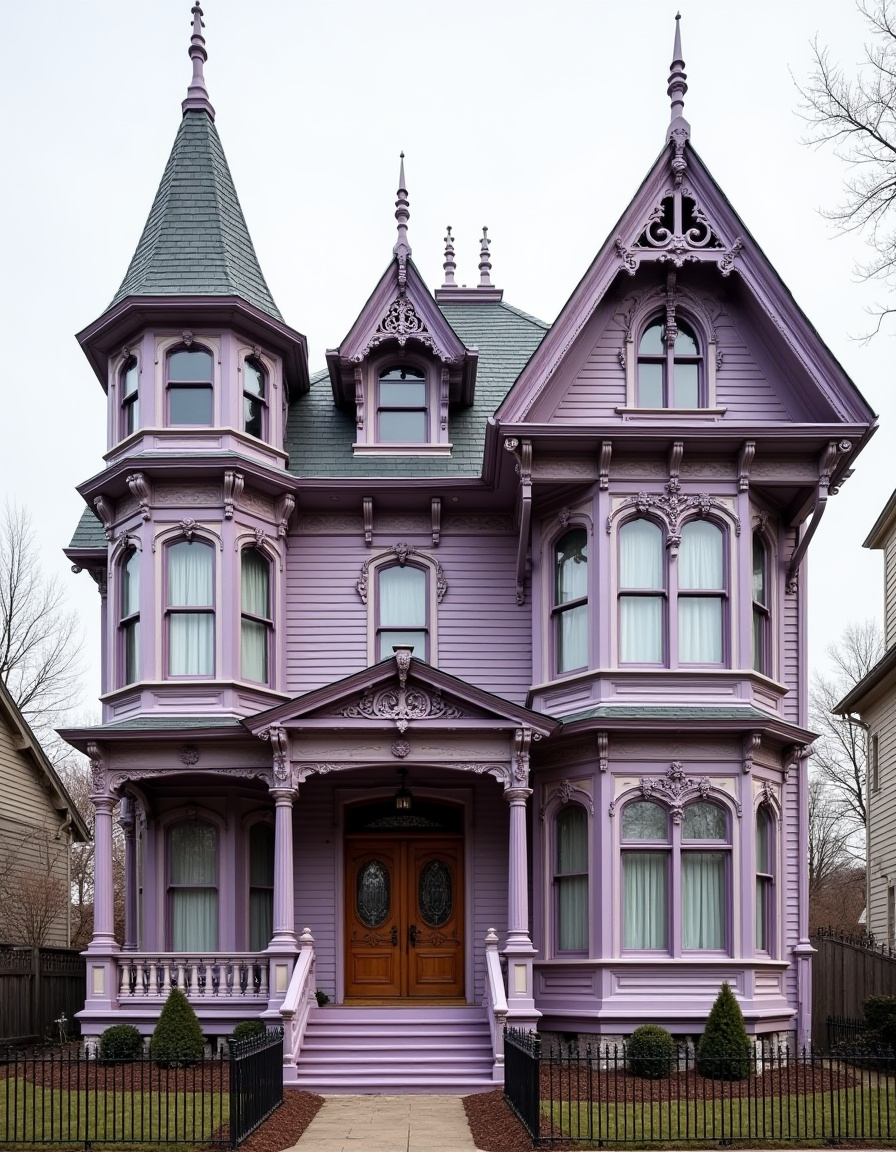Step into a Victorian home, and you enter a world designed not only for living but for feeling. Every corner, every fabric, every object was chosen with care, layered with meaning. This was not simply architecture and decoration; it was a vibe. The Victorians knew how to build spaces that carried weight, mood, and charm. Their homes were stages—grand enough for mystery, intimate enough for comfort—and their influence lingers every time we light a candle beside a book, draw velvet curtains against autumn dusk, or fall in love with the silhouette of a gabled roof.
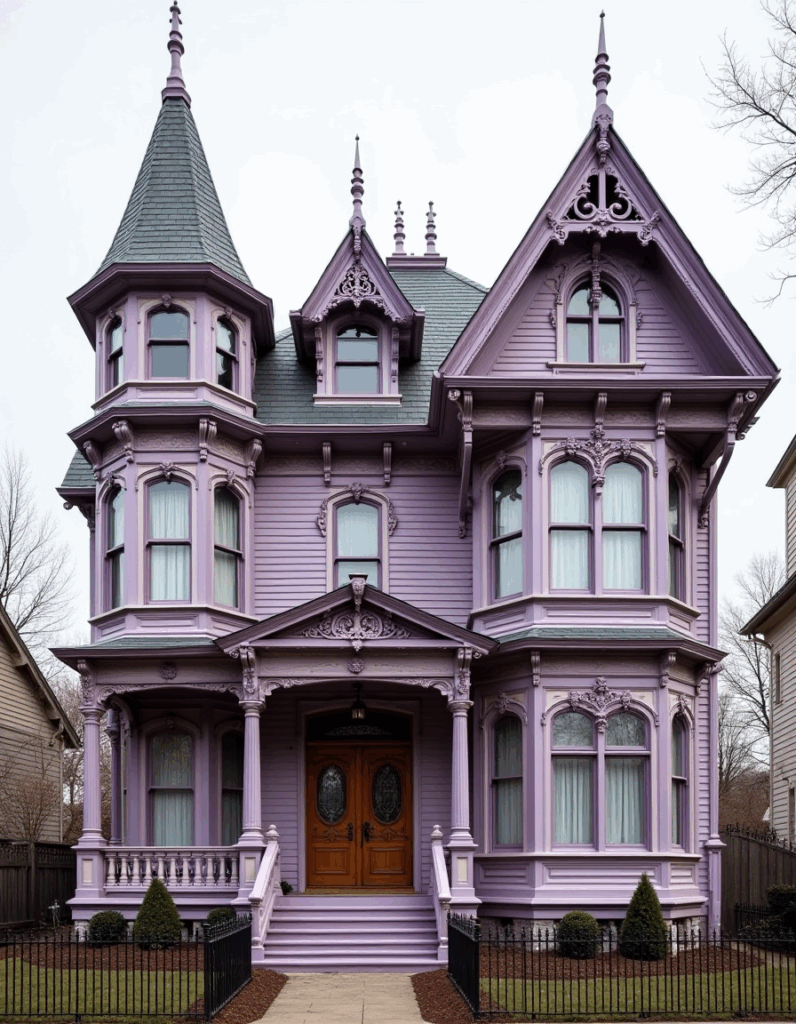
Victorian Homes with a Vibe: Architecture That Feels Alive
Victorian houses are instantly recognizable, even to those who have never studied architecture. Tall gables reaching into the sky, bay windows curving outward like lanterns, wraparound porches framed with ornate balustrades, and shingles carved into delicate patterns—all combine to give these homes a sense of presence. They feel watchful, as if they have moods of their own.
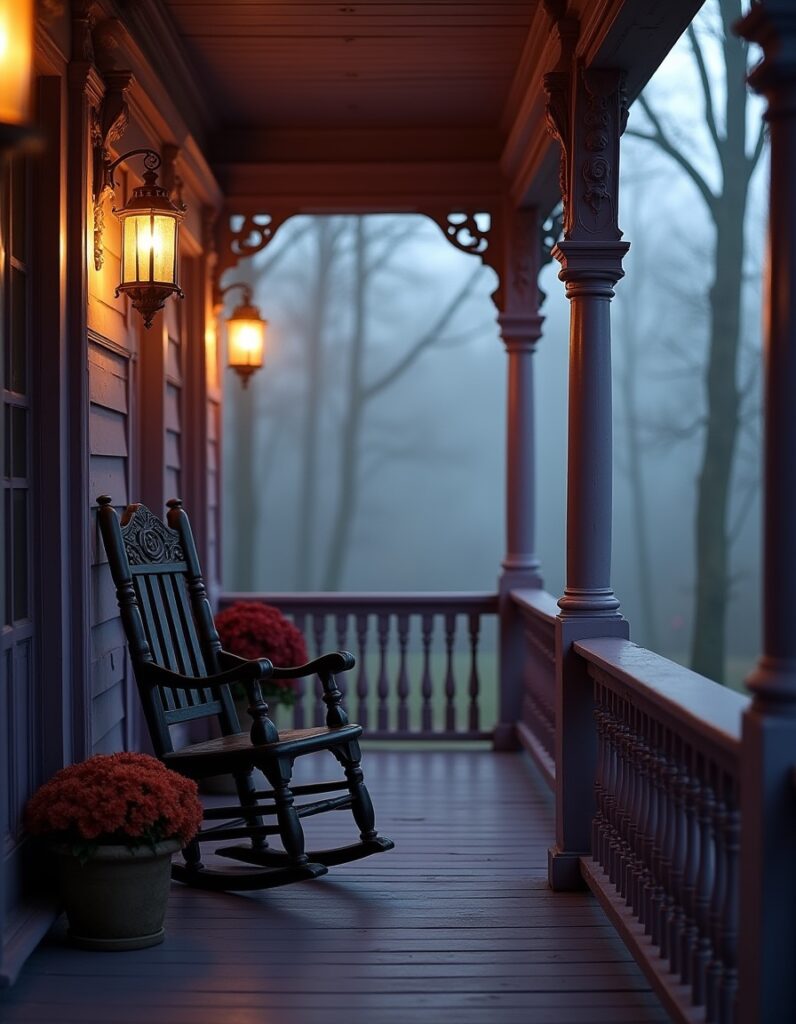
Defining Features of Victorian Houses: Gables, Turrets, and Porches
Inside and out, Victorian homes were designed to impress. Distinctive gables and turrets gave them silhouettes unlike any other, while porches offered space for both community and display. These features created homes that felt alive, with personalities all their own.
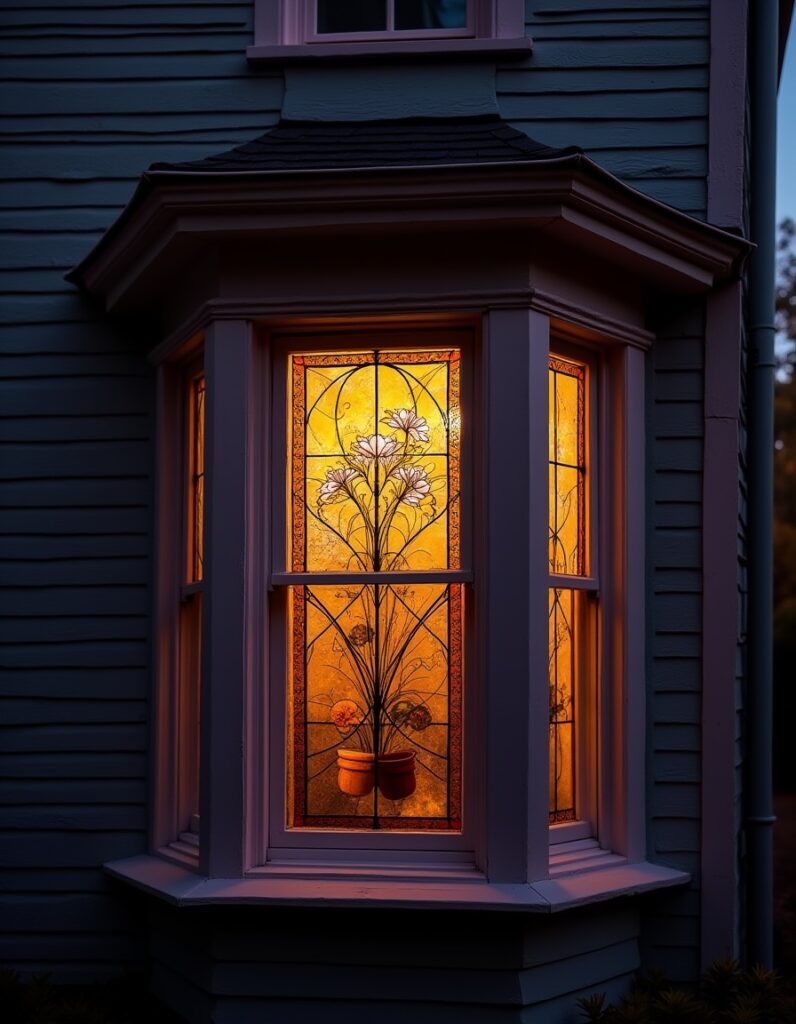
Why Victorian Architecture Inspires Gothic Aesthetics Today
The weight and drama of these architectural details naturally feed into the gothic aesthetic. A stained-glass window glowing at dusk or the curve of a turret against the sky carries a mystery that continues to inspire.
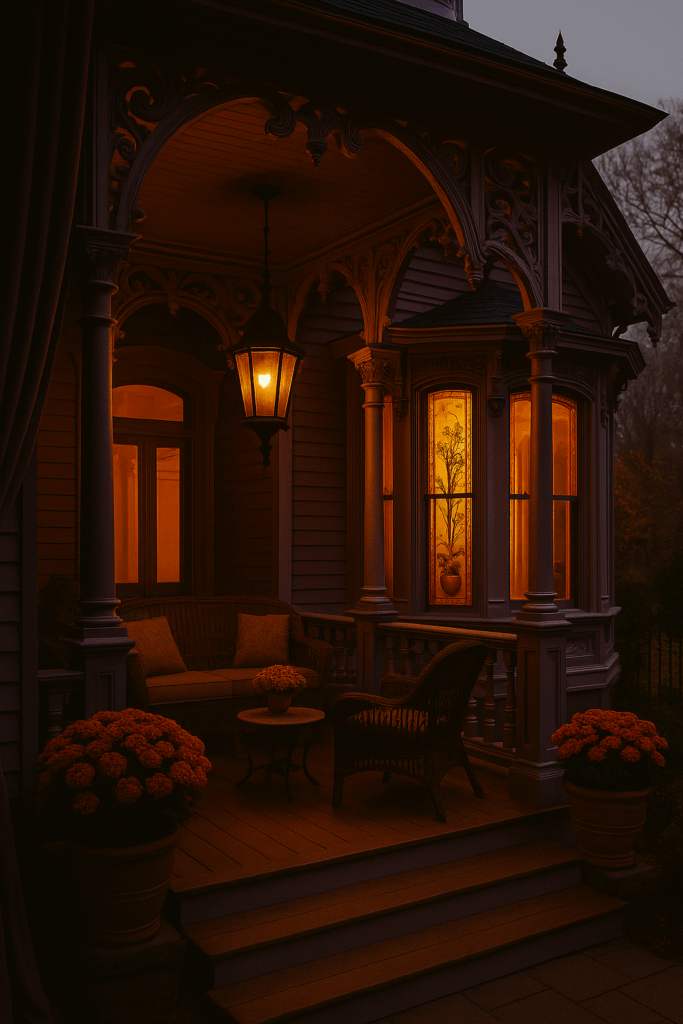
The “Haunted House” Archetype and Victorian Design
For us today, the Victorian home is the archetype of the “haunted house.” Not because it is frightening, but because it is a whole aesthetic. Even silence in such a space seems to whisper, inviting stories to take root in its walls.
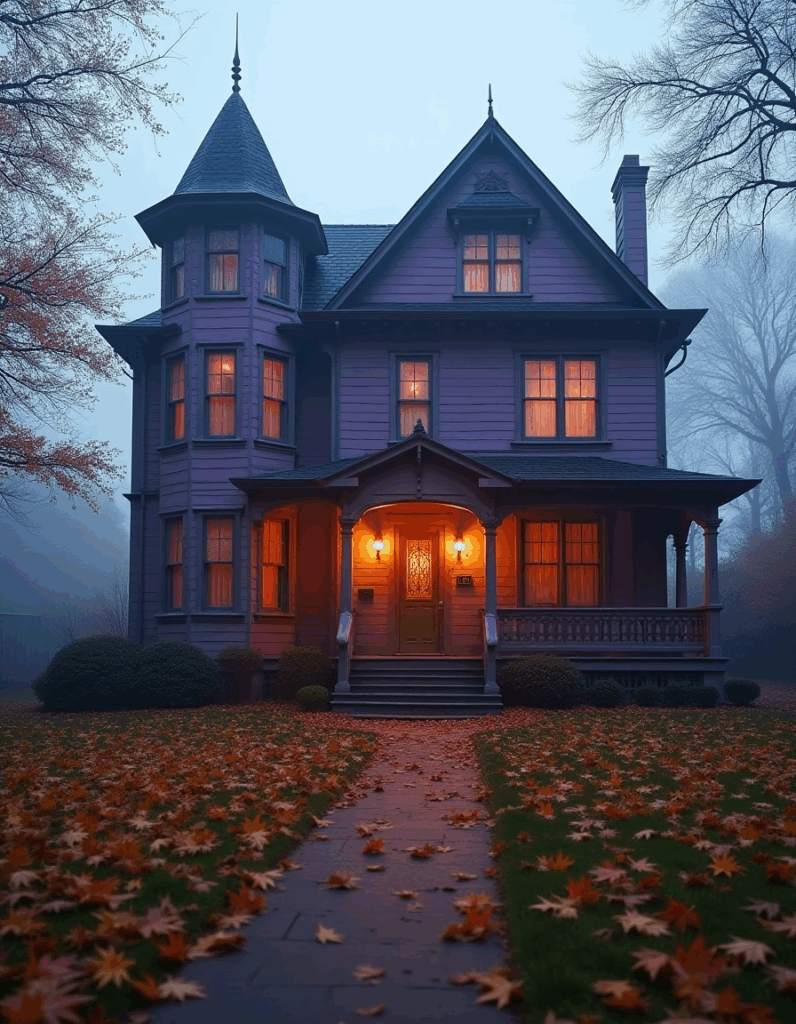
Parlours of Mystery: Victorian Rituals, Séances, and Gothic Charm
At the center of the Victorian home was the parlour—a room not for private living, but for display and ritual. Guests were received here, entertained under the glow of oil lamps and candlelight. It was a stage where families could project refinement, creativity, and mystery.
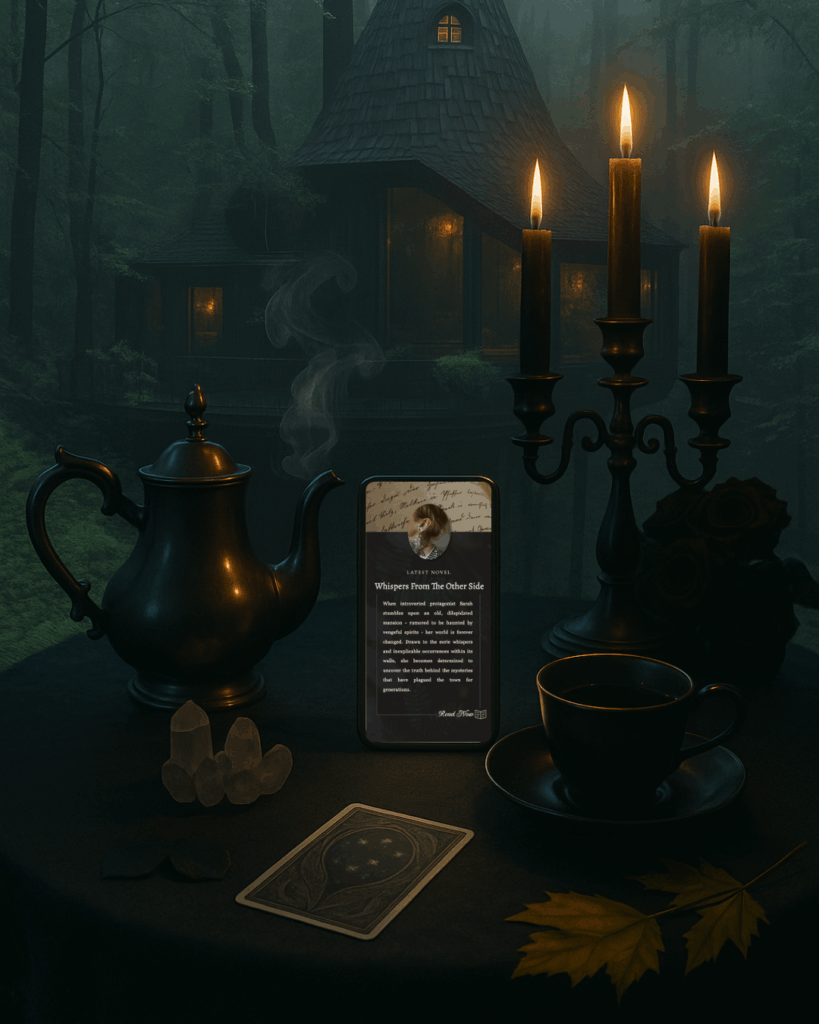
It is no wonder that the parlour became the setting for spiritualist gatherings. In the 19th century, séances and table-tapping sessions were popular forms of entertainment. While some participants genuinely believed, many were captivated by the theatricality of it all. The dim lighting, the hushed voices, the velvet curtains drawn against the outside world—these elements created a mood that blurred the line between performance and belief.
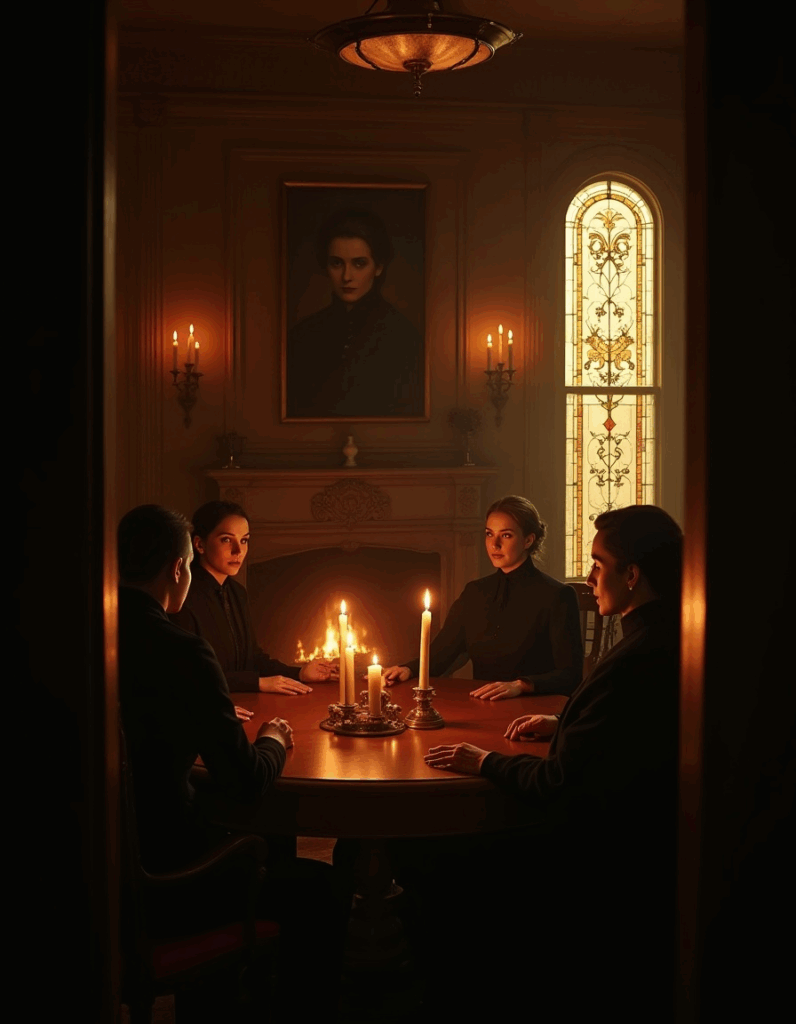
These evenings were often less about horror than about aesthetics. They combined social ritual with the promise of connection to the unseen. Participants usually didn’t expect a clear ghostly apparition—just the stirring of possibility. The mood itself was the experience. Today, when we picture cozy gothic imagery, we’re drawing from those very images: a candlelit parlour, velvet shadows, and the alluring mystery that feels intimate, not frightening.
Victorian Photographs and Keepsakes: Memory Made Tangible
The Victorians also excelled in making memory tangible. Photography was still new, and it carried with it a sense of magic. Portraits were taken with great seriousness, the long exposures producing faces both solemn and soft. Families treasured these images, framing them in ornate cases or displaying them in albums that became heirlooms.
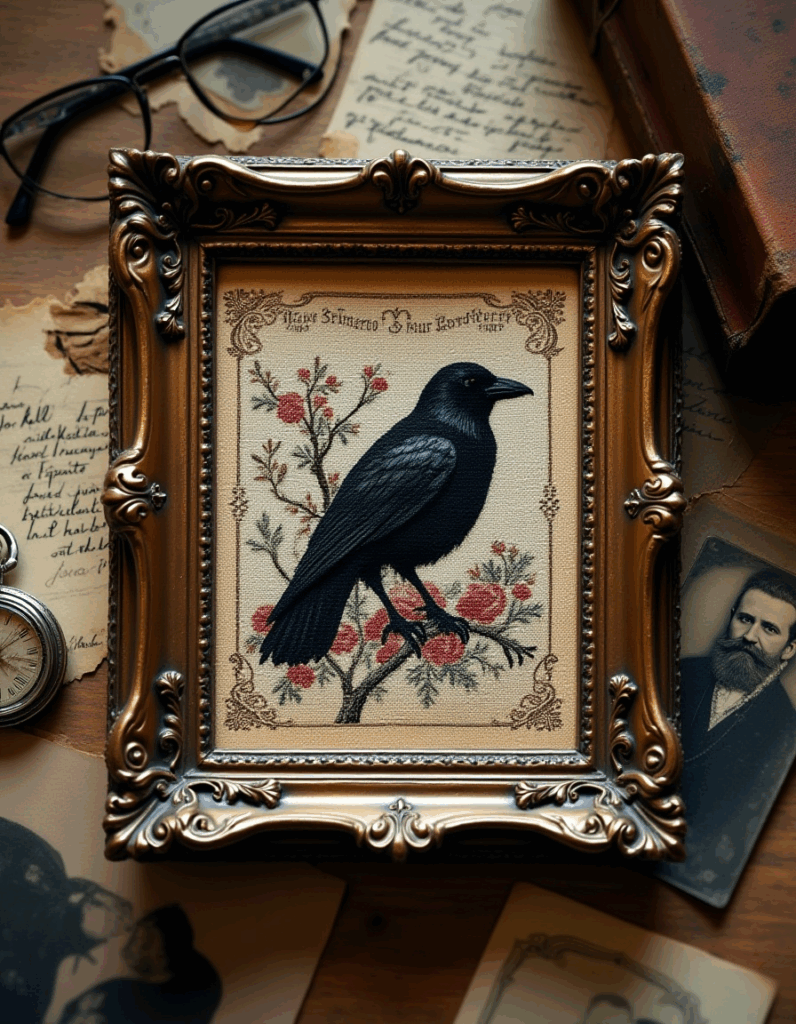
But memory extended beyond photographs. Locks of hair were woven into jewelry, flowers were pressed into books, scraps of fabric were stitched into samplers. These objects were not merely keepsakes; they were works of art. They transformed remembrance into beauty, ensuring that even absence could be enveloped in elegance.
This instinct survives in our digital world. When we curate aesthetic feeds, pin images to boards, or arrange seasonal vignettes in our homes, we are practicing a kind of modern keepsaking. We collect aesthetics the way Victorians collected mementos—traces of a feeling, gathered and preserved so that we can return to them when needed. The gothic aesthetic thrives on this continuity, turning memory into art.
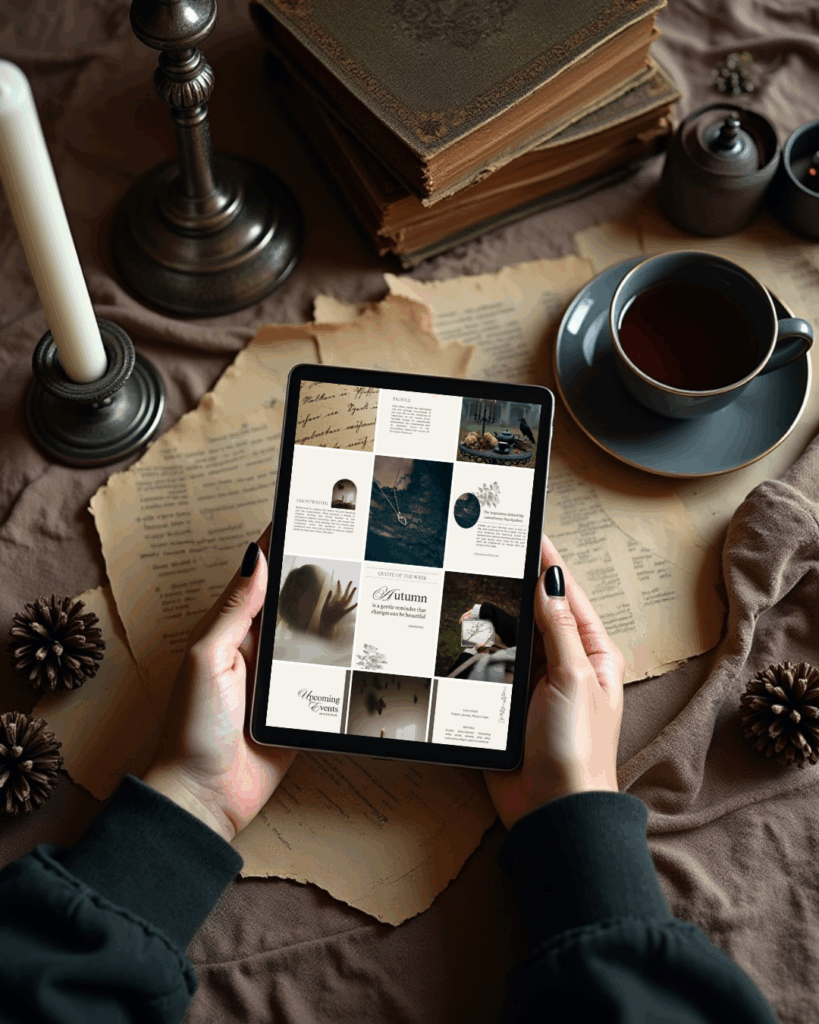
The Enduring Charm of Victorian Shadows and Gothic Elegance
What captivates us about the Victorians is not morbidity, as is sometimes assumed, but devotion to aesthetics. Their world was designed for mood. Light was filtered through lace curtains, furniture was chosen for ornament as much as utility, and even the rituals of daily life—from tea service to evening gatherings—were infused with ceremony.
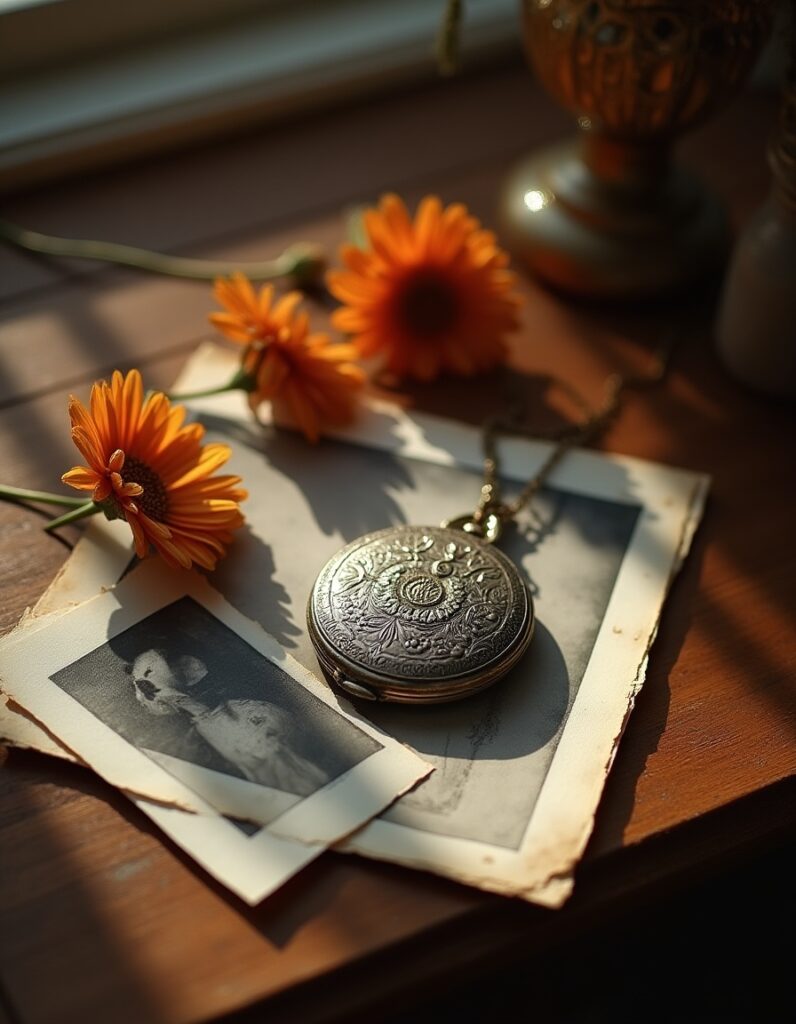
This is the legacy that continues to enchant us. When we decorate our homes with flickering candles, when we savour the cozy hush of autumn evenings, when we post images of ivy-covered stone or velvet armchairs, we are continuing the Victorian tradition of aesthetics. They showed us that beauty is not only in brightness, but in shadow—that elegance can be found in depth, texture, and mystery.
The gothic aesthetic we love today owes much to these homes, these parlours, these keepsakes. They remind us that life can be lived richly, that mood matters, and that even the smallest gestures can create worlds. The Victorians built stages for mystery and charm, and we are still actors upon them, arranging our own rooms, feeds, and lives with the same desire: to live in beauty, to linger in a vibe, and to let a little shadow make the light all the warmer.
